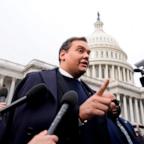Underdone: Tanning tax revenue falls short of estimates
— -- The IRS got red-faced trying to collect the new tanning tax, burning a hole in estimates on how much the levy would bring in to federal coffers, a new report said Thursday.
The Treasury Inspector General for Tax Administration said the IRS developed outreach plans to notify tanning salons the 10% federal tax would be due on ultraviolet light services paid for as of July 1, 2010.
But, while the agency also updated tax forms and tax return processing systems to prepare for the new levy, the IRS had difficulty determining the actual number and contacts for businesses required to collect the new tax from customers.
Using an April 2010 Indoor Tanning Association estimate, the IRS initially projected the tax would be due quarterly from roughly 25,000 stand-alone tanning salons, plus spas, health clubs and beauty parlors.
But the inspector general report found that actual tax returns filed for the first three quarters through March 31 averaged just above 10,300.
Tanning tax receipts for that nine-month period totaled $54.4 million, the report found. That was below projections by the Congressional Joint Committee on Taxation, which had estimated the tax would raise $50 million in the last three months of fiscal year 2010 and $200 million for the full 2011 fiscal year.
The report blamed the problem on the IRS' apparent use of incomplete information in its effort to identify taxpayers covered by the levy. It also said the IRS should have acted faster to collect. By the time notices were issued, tax returns had been due for three quarters.
"The IRS quickly implemented the tanning tax under a tight deadline," said J. Russell George, who heads the inspector general's office. "Since this was a brand new tax imposed on a group of businesses and taxpayers with no previous experience with excise taxes, the IRS should have done more to inform taxpayers of their filing responsibilities and bring them into compliance in a timely manner."
The inspector general's office recommended the IRS analyze the data sources it used for the tax, including records with incomplete address information, to determine whether some tanning businesses weren't notified about the levy. The agency should also determine whether other data sources are needed to identify tanning salons.
Agreeing with the recommendations, Faris Fink, head of the IRS Small Business/Self-Employed Division, wrote in a Sept. 7 response that the tax agency has "compared the list of taxpayers who have already filed returns with the broader list that we have collected, and have sent explanatory notices to businesses who have not yet filed."
"Once this analysis is complete, we will have a better sense of how many of the businesses who have not yet filed are actually subject to this new excise tax," Fink said.






